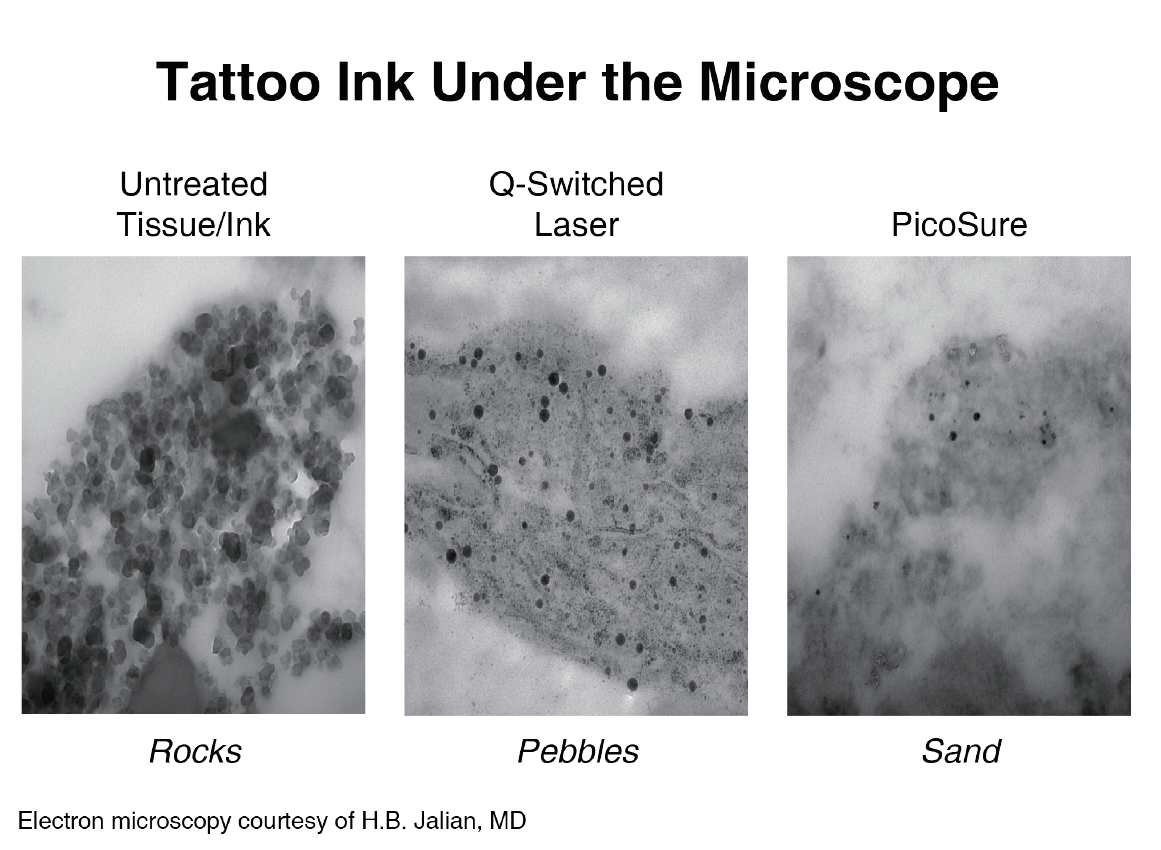
▶ Previous Artlcle : #18-1. Picosecond Laser
However, the PICOSURE was also a 755nm wavelength laser, and many doctors agreed that it could respond well to chromophores such as melanin and black ink but poorly to weak chromophores.
Nevertheless, it shows high selectivity for melanin and dark colors and has peak power much higher than that of a nanosecond laser, displaying remarkable pigment decomposition.
This is why the PICOSURE can treat pigmented lesions such as freckles and tattoos more effectively and quickly with less frequency (Figure 2).
[Advertisement] MAGNUM(Q-switched Nd:YAG Laser) – Manufacturer: (www.i-dana.com)]
Differences between Picosecond Laser and Nanosecond Laser
After the 755nm picosecond laser, the 1064nm picosecond laser was released home and abroad.
The pulse duration was 750nm picosecond but gradually upgraded to 550ps, 450ps, 300ps, and even 150ps picosecond laser.
Since I began to use the 1064nm picosecond laser when it was first released, I have wondered how different the 1064nm was from a 1064nm nanosecond laser, concluding that the picosecond laser was totally different from the nanosecond laser, based on numerous cases I dealt with.
A picosecond signifies 10-12 seconds and a nanosecond 10-9 seconds, indicating that a picosecond laser is 1,000 times shorter than a nanosecond one.
This creates differences in the peak power between the two lasers, as seen in Figure 3.
Differences in peak power induce differences in changes in tissues caused by laser energy.
Laser is based on photothermal effects; The photothermal effects vaporize, coagulate, or chemically change the tissues to excise or denaturalize the tissue to regenerate healthy and normal new tissue.
Figure 2. Electron microscopy images of tattoo ink response to Laser(by Cynosure).
-To be continued





















